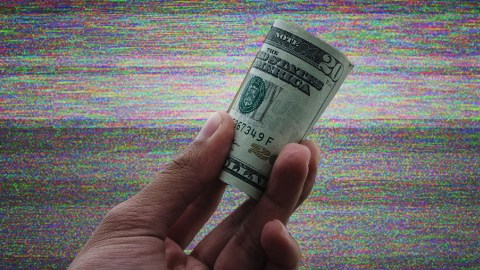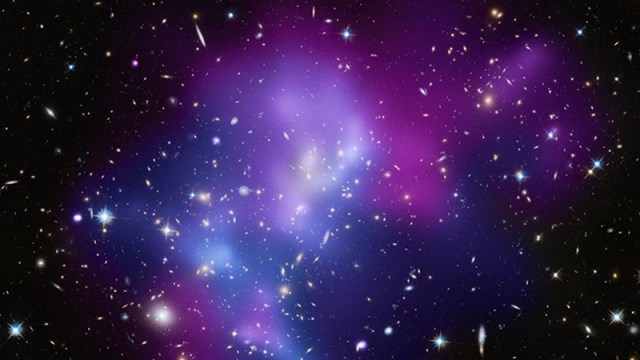Digital Revolution: More and More People Are Paying For Content

Growing up, my father often complained about the rising cost of our cable subscription. The bills got higher, the number of stations increased, yet the amount of television we watched rarely changed. The ‘value-added’ networks didn’t add much value. As the number of networks increased the actual worth of television only seemed to decrease.
Much has changed. The amount of content—the word that has replaced ‘art’ and ‘creation’ in recent years—is staggering, leaving an unfathomable amount of unwatchable television in the queue. Yet many have claimed this to be a ‘golden era of television.’ It’s hard to disagree.
While the administrative bureaucracies behind major movie studios take fewer risks, cable TV studios, many now free from the burden of bundling, are pushing boundaries. Shows like HBO’s ‘The Young Pope’ and ‘The Leftovers,’ the BBC’s ‘Peaky Blinders’ and ‘Sherlock,’ and Hulu’s ‘The Path’ take chances only found in independent movies.
As consumer watching habits shift and producers rush in to fill their needs, the question of creative value has been a constant. The NY Times’ Farhad Manjoo, for one, believes the expanding opportunities offered by the digital revolution are saving culture, pushing art forward in interesting, new multi-disciplinary platforms. Manjoo thinks today is “the beginning of a remarkable renaissance in art and culture.”
“In just about every cultural medium, whether movies or music or books or the visual arts, digital technology is letting in new voices, creating new formats for exploration, and allowing fans and other creators to participate in a glorious remixing of the work. This isn’t new; from blogs to podcasts to YouTube, the last 20 years have been marked by a succession of formats that have led to ever-lower barriers for new and off-the-wall creators.”
There is truth to this, though Manjoo comes off as overoptimistic regarding the number of success stories. He points to a handful of Patreon phenoms who are earning their living as independent creators thanks to monthly subscribers. The technology exists and they have taken advantage of it—a certain benefit for those working from the ground up. The problem of rising to the top of the tens of thousands of Patreon users remains, however.
Which is a different scenario than the cable bundling model. In the old days (the eighties, in my case) small networks were able to exist thanks to behemoths like HBO, Showtime, and Cinemax. This model still works for networks like ESPN, which gets six to seven dollars for every subscription, the highest paid network today. Their success allows smaller players to stay in the game.
ESPN provides a perfect example of the necessity of mass appeal. As Atlantic senior editor Derek Thompson writes, the network lost its way in the nineties. It “tried to promote every single thing rather than focus on a few things.” The creation of SportsCenter marked a needed turnaround. For 14 straight years it was the number one show for me. Yet even now success relies on multiple platforms: viewership has dropped since 2010 while readership on the website has skyrocketed as seven million people subscribe to breaking news updates delivered to their phones.
The subscription model is ultimately why Manjoo is so enthusiastic about the artistic revolution. He notes that Netflix added seven million new subscribers during the last quarter of 2016, bringing its total audience to 94 million. Spotify is up to 50 million; Apple Music, 20 million. This does not mean creators are properly compensated (as someone with over a million plays on Spotify, I can attest to the laughable royalties).
Expansion of platforms and ease of access have laid the grounds for an interactive art that is quite new. While it harkens back to past times—sponsorships and intimacy—the sheer reach of the online world is groundbreaking. Independent creators still battle a corporate hierarchal structure on major platforms while struggling to capture the attention of potential fans in an oversaturated market. From a consumer perspective, however, Manjoo is correct. The unbundling process has afforded us greater flexility in choosing exactly how we want to experience the art we enjoy.
Is this always a good thing? What about the potential for discovery? Consider an argument dominating the future of social media: If you’re only seeing news you agree with while interacting with friends that already share your values, is the lack of alternative viewpoints causing us to regress as a society? Is the same trend possible in the arts?
While social media feeds purposefully skew information (and product placement) to keep your eyes glued and fingers clicking, entertainment platforms are trying to master the art of discovery. Yet it cannot rely on a passive relationship between platform and consumer. I for one listen to my Discovery Weekly every Monday and Release Radar every Friday on Spotify. Yet many users I chat with have no idea these features exist because they never bother to scroll through the left side navigation bar. No matter how easy Spotify is making discovering new music, the company can’t control your inattention.
While it couldn’t be any easier to discover new music, some companies appear to be responding to consumer desires rather than honoring creators. A new Netflix feature allows you to skip the opening credits. The reason is that binge watchers shouldn’t have to endure the repetitive 30-60 seconds each episode. Yet for people who worked on the show—not the stars, but the grip, music supervisor, and so on—that’s their only shot at any recognition beyond their paycheck. Most tune out anyway; deleting the opportunity is another story altogether.
Some opening credits are standalone works of art that set the tone for the show. [Credit: Digital Kitchen]
Which might just be part of the sacrifice of the digital age. Interestingly these questions bring to mind an age-old question: Is it about the art or the creator? We don’t know many of the authors of classic folk songs. They seem to have always existed, with fresh interpretations constantly arising. For example, the first known recording of ‘St. James Infirmary Blues’ was cut by Louis Armstrong in 1928; last year Yo-Yo Ma released this stunning version.
Does the fact that we are not certain about the song’s author matter? Or is it truly about the art? I don’t believe there’s a right answer—our opinion will be dependent on how we create and consume. But Manjoo is right: today we are at a fertile junction to be both artist and fan. Where it leads is unknown. There will be winners and losers, as that’s always the case. My vote is to enjoy what we can while we have the time because regardless of outcome, the arts give us meaning as a species, which will always be an integral aspect of who we are.
—
Derek’s next book, Whole Motion: Training Your Brain and Body For Optimal Health, will be published on 7/4/17 by Carrel/Skyhorse Publishing. He is based in Los Angeles. Stay in touch on Facebook and Twitter.





